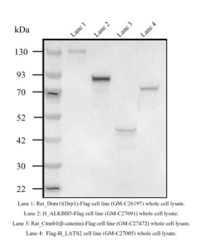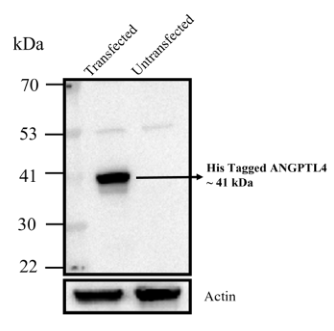Flag Antibody
The Flag tag is a specific amino acid sequence (DYKDDDDK) engineered onto a target protein using genetic engineering techniques, forming a fusion protein of the flag tag with the target protein. Due to its small size and hydrophilic nature, the Flag tag typically attaches to the surface of the fusion protein, minimally affecting the function and properties of the fusion protein. Flag antibodies can detect the Flag tag (DYKDDDDK) located at the N-terminus, C-terminus, or within the fusion protein. They are widely used in the research of detecting and purifying Flag-tagged fusion proteins, identifying protein interactions, and exploring protein structure and function.
His Antibody
The His tag is a short peptide composed of six histidine residues (His-His-His-His-His-His), specifically designed for the purification of recombinant proteins by affinity purification. With its small molecular weight and ease of isolation and purification, the His fusion tag has many advantages compared to other tags and is one of the most widely used fusion tags for purification. The His tag can establish an efficient detection and purification system based on fusion proteins. His antibodies can be used to detect the expression, cellular localization, as well as qualitatively or quantitatively analyze His-tagged fusion expressed proteins.
Myc Antibody
The Myc tag is a short peptide consisting of 11 amino acids (sequence EQKLISEEDL) that can be placed at the C-terminus or N-terminus, successfully applied in techniques such as Western blot, immunoprecipitation (IP), and flow cytometry. The low pH elution condition of Myc may reduce protein activity, hence it is commonly used for detection rather than purification. It is used to detect the expression of recombinant proteins in target cells. Myc antibodies interact with the Myc tag on the target protein, specifically recognizing Myc-tagged target proteins.



















